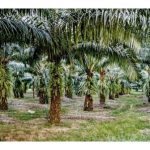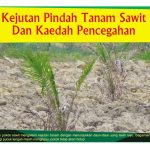That viewpoint — buying oil palm land in rural areas as a long-term investment while living off the harvest income — carries a mix of truth, potential, and hidden risks. Let’s unpack it in a narrative form:
The Promise of the Palm Estate
Imagine a small-town investor, perhaps in his forties, who decides to buy 30 acres of mature oil palm land. He reasons that rural land is cheap today, but will be scarce tomorrow. While waiting for the area to appreciate — as new roads, townships or agro-projects appear — he can still earn a steady income from the palm harvest.
This is a common and somewhat logical strategy among rural investors and planters in Malaysia and Indonesia. The reasoning rests on two solid fundamentals:
Land appreciation over time.
Agricultural land, especially near growing towns or future industrial corridors, tends to appreciate steadily. Land scarcity and infrastructure expansion (such as new highways, rail links, or estate developments) often turn remote farmland into valuable real estate.
Self-sustaining asset.
Unlike idle land, an oil palm estate produces monthly or biweekly income from fresh fruit bunch (FFB) harvests. Even if prices fluctuate, the land pays for its own maintenance, covers basic living expenses, and may even generate a surplus.
The Economic Reality Behind the Dream
However, this approach is not as simple as it sounds. Several economic and management realities shape whether the strategy truly works:
- FFB prices and yields fluctuate.
If the palms are old (over 20 years), yield drops significantly. Unless replanting is done, income may fall below maintenance costs. On the other hand, young palms take 3–4 years to bear fruit, meaning the investor must survive the “dry years” before cash flow stabilizes. - Maintenance is crucial.
Fertilizer, weeding, and harvesting labor costs continue regardless of market prices. A neglected estate quickly loses productivity and less appealing to future buyers. - Land appreciation depends on location.
Not every rural area will see rapid growth. Estates far from main roads or towns may appreciate only marginally, even after 10–15 years. The best returns usually come from semi-rural “growth corridors” — places just outside expanding townships or planned industrial/agro zones. - Liquidity and long-term horizon.
Farmland is not easy to sell quickly. This is an investment that suits those who can wait 10 to 20 years, not those expecting short-term flips.
A Balanced View: Productive Patience
The truth lies somewhere in between:
- Buying oil palm land in rural areas can indeed be one of the most stable long-term investments, but only if the investor approaches it as a business, not a mere bet on appreciation.
- In other words, treat the estate as a productive asset first, and a speculative asset second.
That means:
- Managing the palms properly (fertilization, pruning, pest control).
- Keeping records of yields and costs.
- Replanting when necessary with higher-yielding or more sustainable varieties.
- Keeping an eye on nearby development plans, infrastructure, or government projects that could influence land value.
The Ideal Scenario
The most successful investors follow this pattern:
- Buy land with existing mature palms or clear development access.
- Operate it efficiently, often through local smallholders or contractors.
- Reinvest profits into gradual replanting, or small diversification (livestock, short-term crops).
- Hold the land through cycles — 10 years, 15 years, sometimes more — until infrastructure or demand pushes up surrounding prices.
- By the time neighboring lands are converted into housing, solar farms, or agro-industrial estates, that “quiet oil palm lot” suddenly becomes a goldmine — and all the while, it has been quietly paying for itself.
In Summary
True, but conditional.
Buying rural oil palm land and maintaining it for harvest income can be a strong long-term investment — but only if you manage it well, buy in the right location, and have patience to hold for a decade or more.
It’s not a “get-rich-quick” path, but for those who think in generational timelines, it remains one of the most real, inflation-resistant, and tangible investments in the agricultural world.
Source: Professional Platform
Note: For Reference Only










